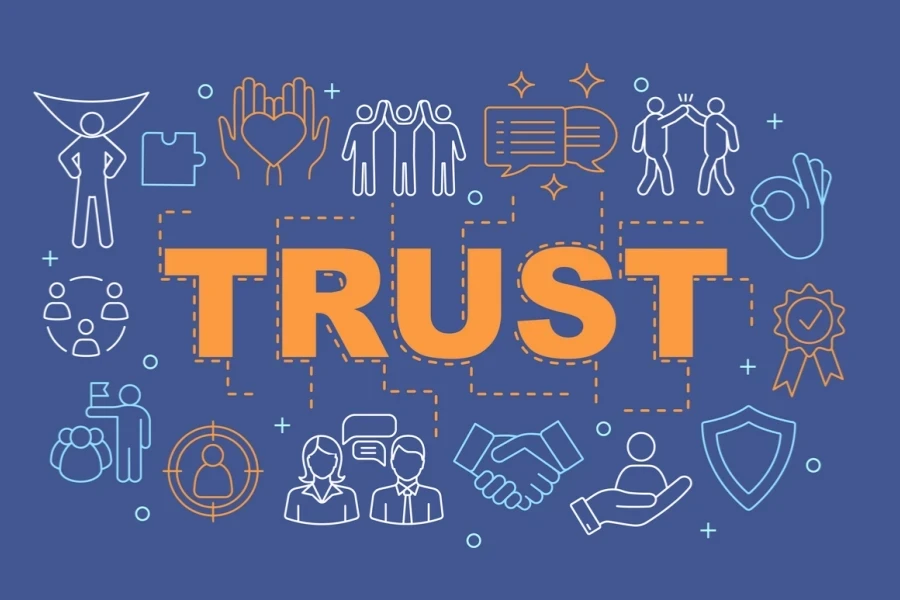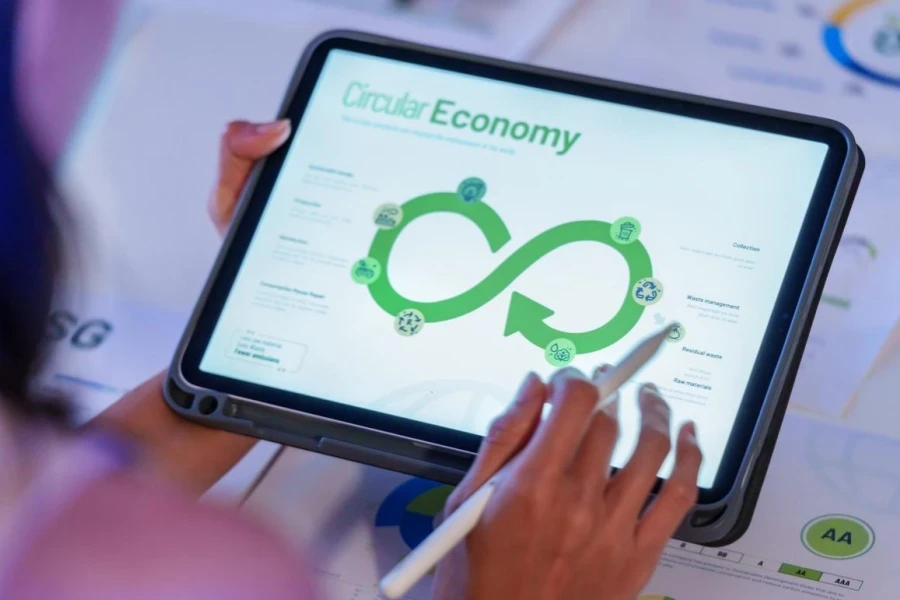The traditional retail playbook—where brands dictate trends and consumers passively buy—is dead. In its place, a new era of co-creative commerce is rising, driven by digitally native generations who demand ownership, authenticity, and shared value. From blockchain-powered design voting to AI-customized luxury experiences, the most innovative brands aren’t just selling products; they’re building ecosystems where customers become partners. Let’s explore how this seismic shift is reshaping retail—and why businesses that fail to listen deeply risk becoming irrelevant.
Table of Contents
Trust Through Transparency: The Currency of Co-Creation
Hyper-Personalization at Scale: Where AI Meets Artisan Craft
Local Roots, Global Reach: The Hyperlocal Imperative
From Transactions to Treasures: Gamifying the Experience Economy
Circularity as Community Service: Profiting from Generosity
The Dark Side of Co-Creation: Navigating Data and Decision Fatigue
Conclusion: Becoming a Host, Not a Hero
Trust Through Transparency: The Currency of Co-Creation

Trust is no longer a “nice-to-have”; it’s the bedrock of modern commerce. Consider Kiki World, a beauty startup redefining inclusivity. Its blockchain-based platform lets users vote on everything from product shades to packaging designs. Each vote earns a “Kiki Key” token, redeemable for discounts or exclusive access. But here’s the twist: Votes are permanently recorded on-chain, creating an auditable trail of consumer input. “We’re not just crowdsourcing ideas—we’re proving we listen,” explains CEO Jana Bobosikova. The result? A 300% surge in pre-orders for their debut nail polish line, with 78% of buyers participating in the design process.
This aligns with Bulbshare’s finding that 86% of consumers trust collaborative brands more—a statistic validated by luxury giants like Van Cleef & Arpels. Their L’École School of Jewelry Arts in Paris isn’t just a marketing gimmick; it’s a radical transparency play. For €490, anyone can take a 3-day course on gemstone grading or enamel craftsmanship. “When customers understand the painstaking labor behind a €20,000 necklace, they stop questioning the price,” says L’École director Marie Vallanet-Delhom. Over 30,000 students have attended since 2012, with alumni spending 2.5x more than average clients.
Key Takeaway: Trust isn’t built through slogans but through verifiable actions. Blockchain and experiential education are becoming critical tools to prove accountability.
Hyper-Personalization at Scale: Where AI Meets Artisan Craft

The myth that personalization is only for luxury is crumbling. Take Adore Me, a lingerie brand using generative AI to let customers co-design bras. Users input preferences (e.g., “Floral patterns inspired by Klimt’s The Kiss“), and the AI generates 3D prototypes in minutes. Human designers refine selections, ensuring wearability. “It’s like having a Victoria’s Secret stylist in your pocket—but one that actually learns your tastes,” says CTO Ben Harburg. Over 40% of users tweak designs multiple times, creating what Adore Me calls “digital heirlooms”: pieces so unique that resale values on Poshmark exceed original prices.
Even heritage brands are embracing this hybrid model. Johnnie Walker’s AI-Crafted Blend campaign invited whisky enthusiasts to create custom Scotch profiles via an app. AI analyzed 10 million flavor combinations, but master blender Emma Walker ensured each recipe adhered to centuries-old distilling principles. The limited 500-bottle run sold out in 72 hours, with 22% of buyers never having purchased premium Scotch before.
Data Spotlight: Deloitte reports 52% of UK consumers now expect personalized products, with 30% willing to pay ≥20% premiums. The lesson? AI isn’t replacing artisans—it’s amplifying their reach.
Local Roots, Global Reach: The Hyperlocal Imperative

Globalization isn’t dying—it’s evolving into “glocalization.” Nike’s Casa Nike in Mexico City exemplifies this. Rather than just stocking Air Jordans, the store features murals by Oaxacan artist Yescka and hosts workshops where locals customize sneakers with traditional Talavera tile patterns. “We’re not a store; we’re a cultural embassy,” says GM Alejandro Gómez. Despite being 20% pricier than Nike’s online offerings, Casa Nike’s foot traffic doubled projections, with 65% of shoppers being first-time Nike buyers.
Food retailer Farm Rio takes this further. Its AI-powered “Tropical Translator” scans social media trends in specific ZIP codes to adjust inventory. A Miami store might highlight pineapple-print dresses after detecting a viral #TropicáliaBrunch trend, while a Seattle location swaps in rain-ready waterproof fabrics. “It’s like Spotify’s Discover Weekly, but for fashion,” quips CMO Luiza Brasil. Revenue in pilot cities jumped 18% YoY.
From Transactions to Treasures: Gamifying the Experience Economy

Gen Z doesn’t want to shop—they want to play. Enter Walmart’s Universe of Play on Roblox, a virtual world where users collect digital tokens by completing challenges (e.g., “Build a rainbow skatepark” or “Design a meme-worthy potato costume”). Tokens unlock real-world discounts, but the genius lies in cross-pollination: A teen designing a virtual LEGO set in Roblox might later join Target’s in-store LEGO Studio to physically build their creation. “It’s a closed-loop dopamine engine,” says Roblox CMO Tami Bhaumik. Since launch, Walmart’s Roblox hub drove a 27% increase in under-25 app downloads.
Luxury brands are gamifying too. Diesel’s 24-hour A/W24 livestream wasn’t just a runway show—it was an interactive treasure hunt. Viewers who spotted hidden QR codes in the broadcast won prizes like a backstage dinner with designer Glenn Martens. Over 2.1 million tuned in, with engagement rates 4x higher than typical livestreams.
Insight: The line between entertainment and commerce is vanishing. Future winners will treat shopping like video game design—rewarding curiosity and skill.
Circularity as Community Service: Profiting from Generosity

Sustainability alone doesn’t sell—but sustainability paired with selfish benefits does. French automaker Renault nailed this with Plug Inn, an app where electric vehicle owners rent out home charging stations. Hosts earn €0.30/kWh (triple the residential rate), while drivers save 40% versus public stations. But the real win? Renault collects granular data on charging habits to improve future models. “It’s a win-win-win: Drivers save, hosts profit, and we learn,” says Renault’s e-Mobility lead Jean-Philippe Bahuaud. Plug Inn now has 110,000 users across Europe, with hosts averaging €280/month in passive income.
Similarly, Patagonia’s Worn Wear Tour—a mobile repair van that fixes damaged gear for free—doubles as a community-building tool. “People stay for hours, swapping stories about their best climbs while we stitch their jackets,” says tour manager Liza Smith. The result? Repair participants have a 92% loyalty rate, and 61% later join Patagonia’s environmental campaigns.
The Dark Side of Co-Creation: Navigating Data and Decision Fatigue
Not all collaboration is constructive. When Claire’s The Collab let Gen Zalpha vote on jewelry designs, they underestimated teen sarcasm. One winning submission: A necklace spelling “I’m Here Because My Therapist Said I Need ‘Self-Care’” in tiny beads. While it sold out, Claire’s learned to add guardrails—now, all designs are vetted by a teen advisory council. “Teens want voice, not veto power,” admits Claire’s CMO Kristin Patrick.
Meanwhile, PacSun’s PacSun Collective—where users submit designs for a chance to earn 5% royalties—faced backlash when AI tools simplified submissions into generic graphics. The fix? A hybrid system: Human artists rework top AI drafts, ensuring creativity isn’t flattened.
Conclusion: Becoming a Host, Not a Hero

The future belongs to brands that act as platforms, not dictators. Like a dinner party host, their job is to set the stage (tools, data, community standards), then let guests shine. Whether it’s Moncler’s Shanghai “City of Genius” merging live art with livestream commerce, or LVMH’s artisan training centers preserving crafts while inviting customer input, success hinges on humility.
As Gartner predicts, by 2027, 60% of retail innovations will originate from customer communities, not R&D labs. The question isn’t whether to co-create—it’s how fast you can pivot from “selling to” to “building with.” Those who master this mindset won’t just survive the retail apocalypse; they’ll define a new golden age of partnership-driven prosperity




